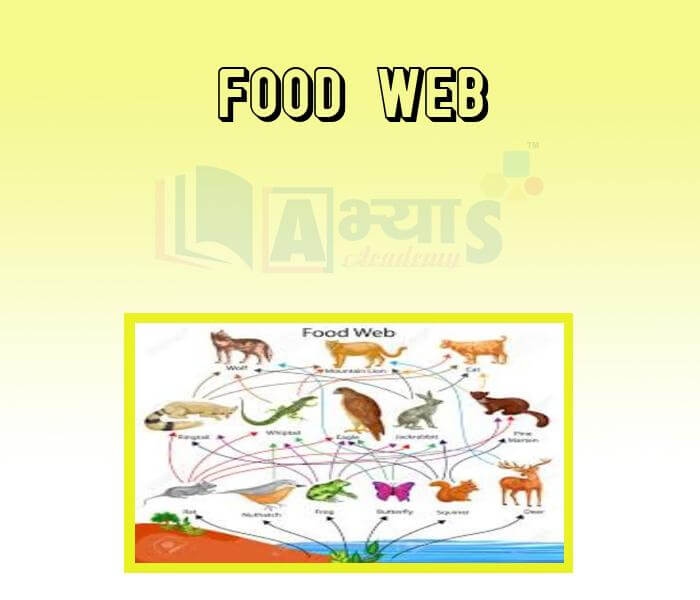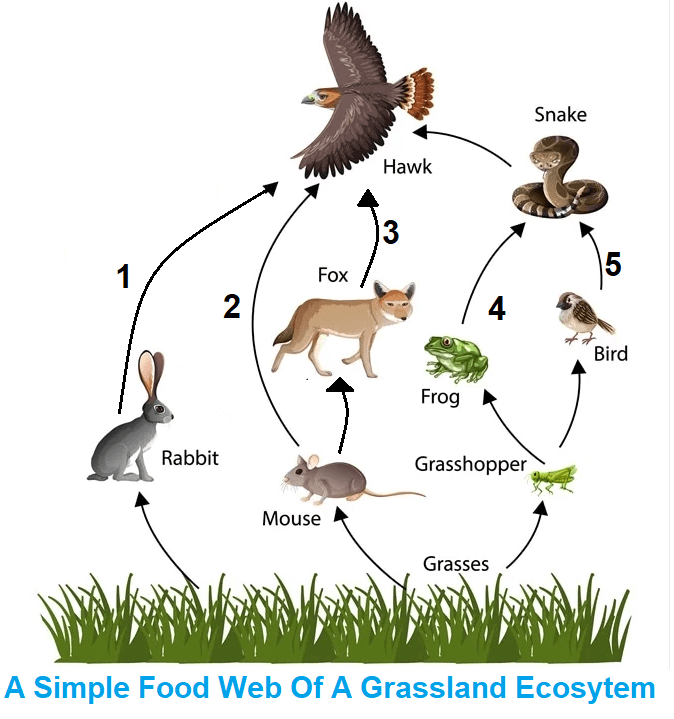Food Web


Food Web
Food Web:
A food chain is a linear arrangement of animals. It does not give a complete picture of the feeding relationships among the different organisms of an ecosystem because many of them eat more than one kind of food. For example, a snake does not eat only mice. It may eat insects, frogs, small birds, etc. Snakes, in turn may be eaten by hawks, eagles, peacocks, owls, etc. Thus, an organism can be a part of many food chains. A food web is a series of interconnected food chains representing the feeding relationships of the organisms within an ecosystem. Unlike a food chain, a food web has several alternative pathways for the flow of energy. In the food web of a grassland ecosystem shown in Figure, there are five food chains.

Characteristics of Food Web:
A group of inter connected food chains is called a ____________________ | |||
| Right Option : D | |||
| View Explanation | |||
Which of the following are correct . (a) A food web is a series of interconnected food chains representing the feeding relationships of the organisms within an ecosystem. (b) In the food web of a grassland ecosystem there are five chains (c) Food webs help in checking the overpopulation of species. | |||
| Right Option : D | |||
| View Explanation | |||
A relationship in which two different organisms live in close association with each other is called __________________ | |||
| Right Option : C | |||
| View Explanation | |||
Students / Parents Reviews [10]
Being a parent, I saw my daughter improvement in her studies by seeing a good result in all day to day compititive exam TMO, NSO, IEO etc and as well as studies. I have got a fruitful result from my daughter.

Prisha Gupta
8thIt was a good experience with Abhyas Academy. I even faced problems in starting but slowly and steadily overcomed. Especially reasoning classes helped me a lot.

Cheshta
10thIt was good as the experience because as we had come here we had been improved in a such envirnment created here.Extra is taught which is beneficial for future.

Eshan Arora
8thIt has a great methodology. Students here can get analysis to their test quickly.We can learn easily through PPTs and the testing methods are good. We know that where we have to practice

Barkha Arora
10thMy experience with Abhyas is very good. I have learnt many things here like vedic maths and reasoning also. Teachers here first take our doubts and then there are assignments to verify our weak points.

Shivam Rana
7thMy experience with Abhyas academy is very good. I did not think that my every subject coming here will be so strong. The main thing is that the online tests had made me learn here more things.

Hiya Gupta
8thI have spent a wonderful time in Abhyas academy. It has made my reasoning more apt, English more stronger and Maths an interesting subject for me. It has given me a habbit of self studying

Yatharthi Sharma
10thAbhyas is a complete education Institute. Here extreme care is taken by teacher with the help of regular exam. Extra classes also conducted by the institute, if the student is weak.

Om Umang
10thAbout Abhyas metholodology the teachers are very nice and hardworking toward students.The Centre Head Mrs Anu Sethi is also a brilliant teacher.Abhyas has taught me how to overcome problems and has always taken my doubts and suppoeted me.

Shreya Shrivastava
8thOne of the best institutes to develope a child interest in studies.Provides SST and English knowledge also unlike other institutes. Teachers are co operative and friendly online tests andPPT develope practical knowledge also.
